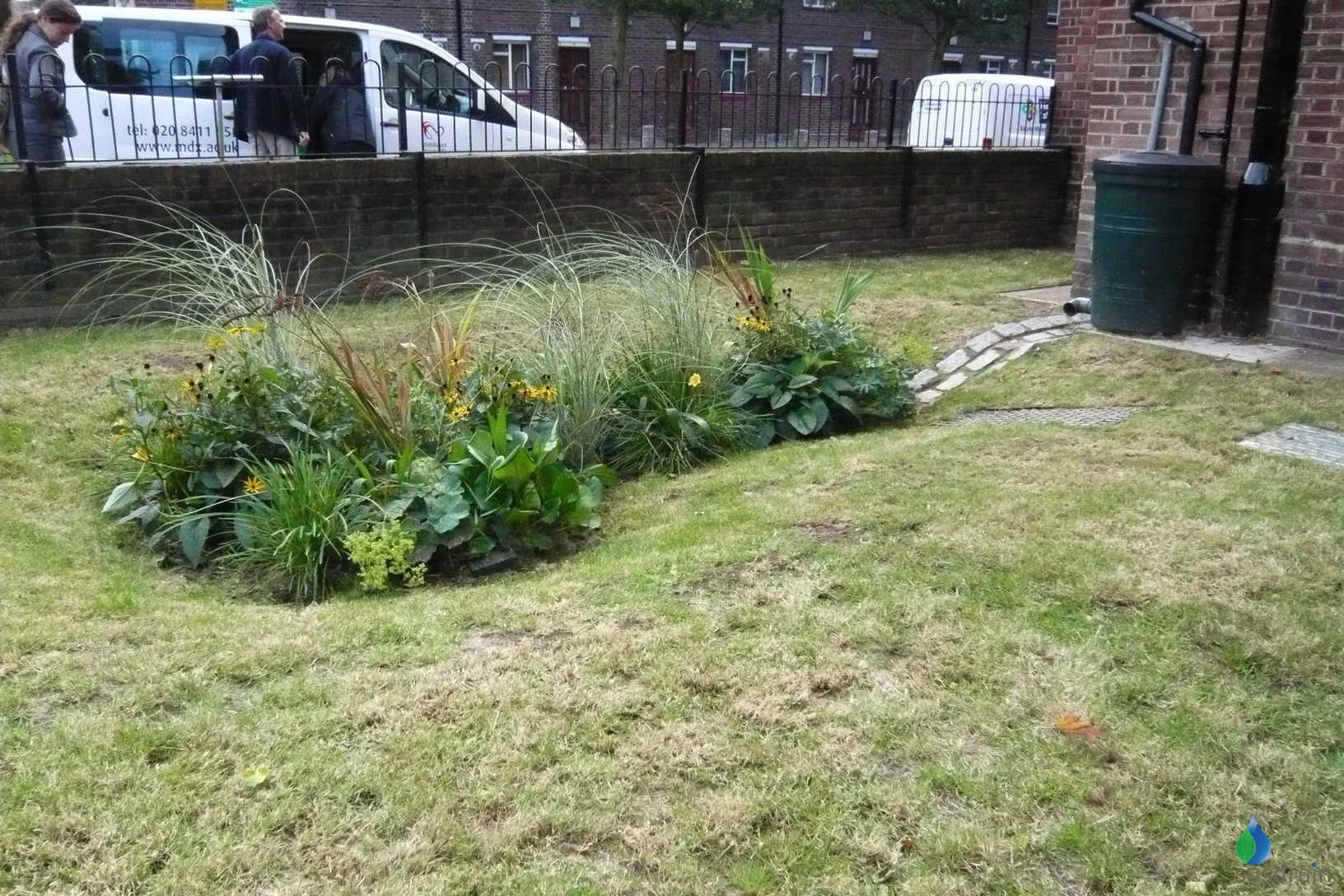How can rain gardens help with flooding and pollution?
A rain garden is an outside space that has been designed to receive rainwater run-off from hard surfaces. It can be used instead of a sunken soakaway to manage rainfall.
The idea is to create a shallow dip, which is connected to roof downpipes by a rill or channel. The sunken area holds water in the event of heavy rain, allowing it to soak away slowly over a period of up to 48 hours.
Rain gardens can absorb 30% more water than a lawn and because the water is held in one place, the erosion of soil from your garden is reduced. The shallow dip can be attractively planted with species that can withstand wet conditions and that create space for nature.
Rain gardens should be situated at least 5 metres from your house, and should not be used where the slope of a garden is more than 10%.
You can add other elements to your rain garden to guide and slow the flow. These might include water butts, rain chains, stormwater planters, and ponds. For more information see the RHS website.
Image: Ashby Grove rain garden, courtesy of Susdrain.


